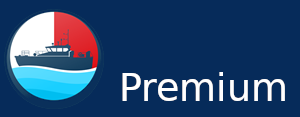Video The historical Bristol Channel Pilot Cutter - Part 1
published on 1 September 2020
Many consider the Bristol Channel pilot cutter to be the finest sailing boat design ever. Fast, seaworthy and beautiful to behold, the pilot cutter is the perfect combination of form and function - a thoroughbred perfectly adapted to a life in one of the Britain's most treacherous stretches of water. Sailor and writer Tom Cunliffe explores the life of the pilots and sails a perfectly restored cutter to find out just what drove these men and their wonderful machines.
Article A journey back in time: films of pilotage from 1940 to 1975 (USA, UK and Germany)
by Frank Diegel - published on 18 May 2020
Video Look at Life - Pilot Aboard 1963
published on 17 December 2019
Video Extraordinary job for Danpilot (DK) - Drone Flight
published on 24 September 2021
Video A Day in the Life: Working on a Small Cruise Ship | pilot arriving on boat operation
published on 6 July 2023
Cruise ship crew Crew life Ship life Working on a cruise ship Cruise ship jobs Crew members Life at sea Cruise ship staff Crew member experiences Cruise ship contracts Behind the scenes Living on a cruise ship Crew quarters Cruise ship lifestyle Shipboard jobs Crew life vlogs Cruise ship adventures Crew life challenges Cruise ship work environment Crew tips and advice
Article Navigator 2021 by Loodswezen is available now
published on 10 January 2022
Video How to get off the ship with Pilot Siri
published on 31 January 2022
Video Who builds SWATH / SWASH vessels for pilots?
published on 1 October 2021
Article Study: A Real-Time Method for Time-to-Collision Estimation from Aerial Images
published on 16 March 2022
Vessels are required by law to have a trained maritime pilot on board responsible for safely navigating the ship to its desired destination. However, ensuring safe navigation inside dock environments is demanding as mistakes can be extremely costly, time-consuming to correct, and even fatal. An assisting tool working autonomously to support the maritime pilot by predicting possible collisions would lower the risk involved with navigating the vessel.


